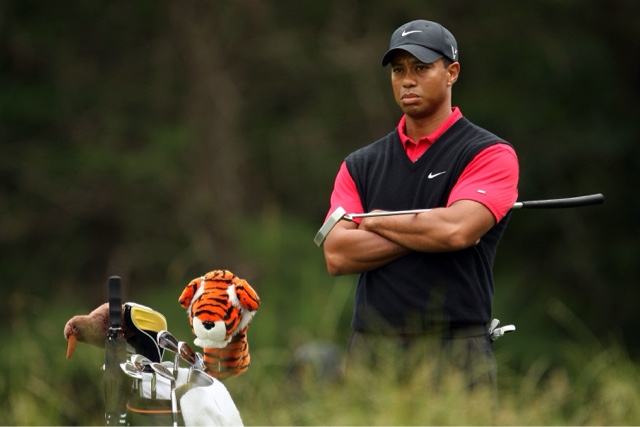I used to love to take my old dog out on the course with me until some anonymous member complained and I was asked not to bring her. To me, dogs and golf courses go together. But the real point of this was this young player's approach to hitting the golf ball. He approached striking the ball as though it was the most natural thing in the world. He just walked up to the ball and hit it--just like a kid hitting a stone with a stick.
One thing Bobby Jones wasn't very fond of was watching the younger players fiddle and fuss around getting ready to hit a golf shot. He said it was hard on the nerves to watch. And I certainly have to agree with him. Now a top professional, playing for his living, has the right, within reasonable limits, to take as much time as he or she needs to hit a shot. No one, Bobby Jones said, should be expected to play a shot until they are ready. But for amateurs, I can't help wondering whether all the pre-shot routine stuff, and the pains often undertaken to get ready to play, pay off in terms of results.
I'm certain that Bobby Jones would have been equally impressed with Harvey Penick's young player--I think his name was Kirby Atwell, but I'm too lazy to look it up right now--and his natural approach to hitting the golf ball. I recently wrote about the simple and obvious way to play the game according to Bobby Jones. And this sort of goes hand in hand with what I'm talking about. Bobby felt that you should understand how the ball needed to be struck to produce the shot you desired, and then you should proceed to set yourself in such a way that you felt capable of delivering that strike; and then you should just do it; like that kid hitting a rock, or a tin can, with a stick.
Yesterday I played with Paul. Paul was having a few problems, he thought, with "lifting his head." I mentioned to him that he may not actually be lifting his head. He seemed to me to be crouched over the ball so much that he simply had to lift up to make room for his arms to swing through. I noticed that he would stand comfortably to the ball, and then, just prior to hitting it, he would bend his knees and sort of lean his upper body over the ball. He then looked decidedly uncomfortable and unorthodox; kind of like, as a buddy of mine would say, a dog trying to hump a football.
Someone had obviously told Paul how important it was to bend your knees. And he had managed to really take that lesson to heart. I suggested that he try just standing up to the ball and bending only as much as he needed to to address the ball. This, I suggested, would help him take advanyage of his height and help him stop "lifting his head."
Paul tried it and hit a nice solid wedge that ended up sailing over the green. He looked quite surprised by how far he hit it. I suggested that he might just find he would be hitting the ball farther if he started standing tall. He tried to remember to do this for the remainder of the day, but obviously found it very difficult not to bend those knees just before he took the club back. Habits are hard to break. But Paul liked the idea of just standing comfortably to the ball and suggested that he would keep trying to do it.
I've been playing better lately doing the same thing. Instead of trying to position myself precisely to the ball, I just step up and hit the damned thing. It's been working really well so far. And, guess what, the ball is going farther. Standing to the ball comfortably always accomplishes at least one thing. It reduces physical tension. Comfortable is good.














